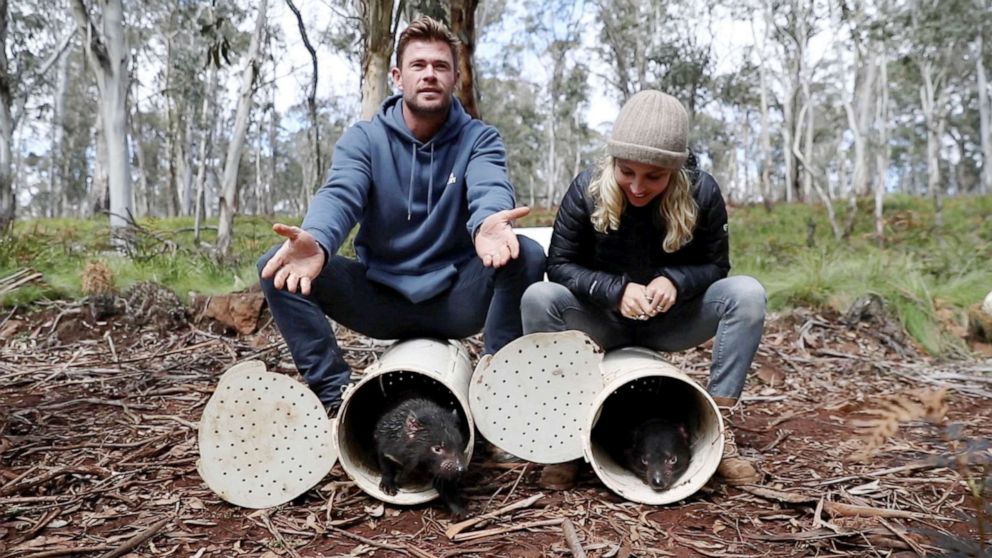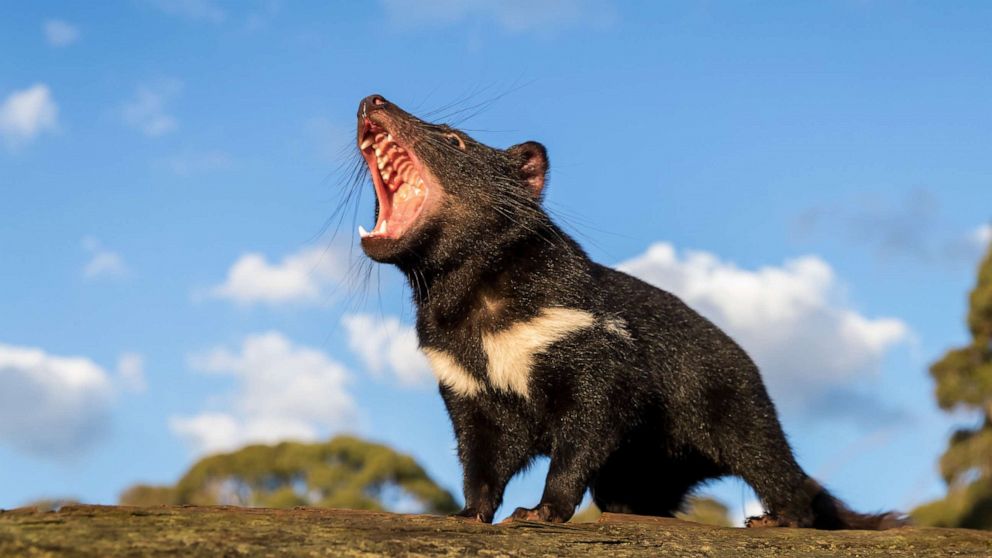Tasmanian devils reintroduced into Australia's mainland for 1st time in 3,000 years
The Tasmanian devil, the feisty marsupial that only resided on the island of Tasmania for the last 3,000 years, has been reintroduced into Australia's mainland for the first time in 3,000 years.
On Monday, 11 devils, along with six other species of small mammals, were released into a large preserve, where they'll be able to roam free, forage for their own food and act as they would in the wild.
The feat is a result of a decade-long project by Aussie Ark, an animal preservation organization that created an "insurance population" for the species, which is listed as endangered on the International Union for Conservation of Nature's Red List.
The release was welcome news after billions of animals were lost in the bush fires that began in late 2019 and have continued into 2020.
"Australia has just been wiped out," Shute said. "We have the worst mammal extinction rate in the world."

The devils existed on mainland Australia for 40,000 years, until around the time the Dingo, a medium-sized wild dog, was introduced on the continent, according to Australian Geographic. It has been widely accepted that the Dingo wiped out the devils, but a study published in the journal Ecology in 2013 challenged that assumption, suggesting that the arrival of Aboriginal populations and a shift in climate are really to blame.
Many of the small mammal populations on the mainland were eradicated when Europeans introduced foxes and cats for hunting in the 19th century, Shute said. The Europeans would hunt the foxes for sport, but once they stopped the hunts and released them, the number of foxes increased exponentially.
"Because the foxes had so much food, so many small, hobby things in the bush, they just exploded," Shute said. "The numbers went through the roof. They just wiped out so many species."
The difference between the introduction of the dingo and the introduction of foxes and cats is that dingos hunt in packs, while foxes and cats "kill whatever they see, even if they're not hungry or feeding," Shute said.
"It's really sad," she said. "Now, you go through the bush at night and it's rare to see a small mammal or marsupial around."

Six other mammals, including the Eastern quoll, Brush-tail rock wallabies, Rufous bettong, long-nosed potoroo, parma wallabies and southern brown bandicoots, were also reintroduced into the mainland and will benefit from the Tasmanian devil's s presence because foxes and cats tend to not want to coexist with them.
All of the species will be living in a nearly 1,000-acre sanctuary, where they will be able to roam free, as in the wild, but with the protection of a fence to keep out the non-native predators. This means they will be finding their own food, shelter and mates, Shute said. The sanctuary will also prevent the spread of disease, feral pests, noxious weeds and fire.
The bandicoots and the potoroos are "so crucial" to the ecosystem because they help to turn over the soil, Shute said. Without them, the "leaf litter" piled up on the bush floor and served as fuel as the fires that ignited last year and caused a drought.
More than 90% of the Tasmanian devil population was lost in recent years due to devil facial tumor disease (DFTD), a nearly 100% fatal cancer first detected 20 years ago. While there used to be about 300,000, just 25,000 are left, Shute said.

Over the past 10 years, Aussie Ark has succeeded in creating an insurance population of Tasmanian devils, a managed program that takes about 95% of the favorable genetics from the species to breed a "robust population" that is genetically viable, Shute said.
This way, if they ever go extinct in the wild, they can be rereleased and the gene pool will be covered, she added.
The organization makes sure to keep the animals in free-range enclosures so they keep their wild instincts, such as kicking their own burrows and coming together to feed, Shute said. More than 390 devils have been born and raised at Aussie Ark.
"In 100 years, we are going to be looking back at this day as the day that set in motion the ecological restoration of an entire country," said Tim Faulkner, president of Aussie Ark, in a statement.
The organization is planning two more releases of 20 Tasmanian devils, each in the next two years. This will give researchers time to study how they are faring, where they are claiming territory, what challenges they are facing, what they are eating and whether they're reproducing.
The hope is to breed enough animals within the insurance population and to then release them into the wild, Shute said.
"Without Aussie Ark's incredible work and perseverance over all of these years, the recent devil reintroduction would not have been possible, and instead of looking forward to the recovery of the species, we would be watching the devil slip into extinction," said Don Church, president of Global Wildlife Conservation, in a statement. "This is an incredible example of how to rewild our planet, bringing back the natural systems to the benefit of all life on Earth."



